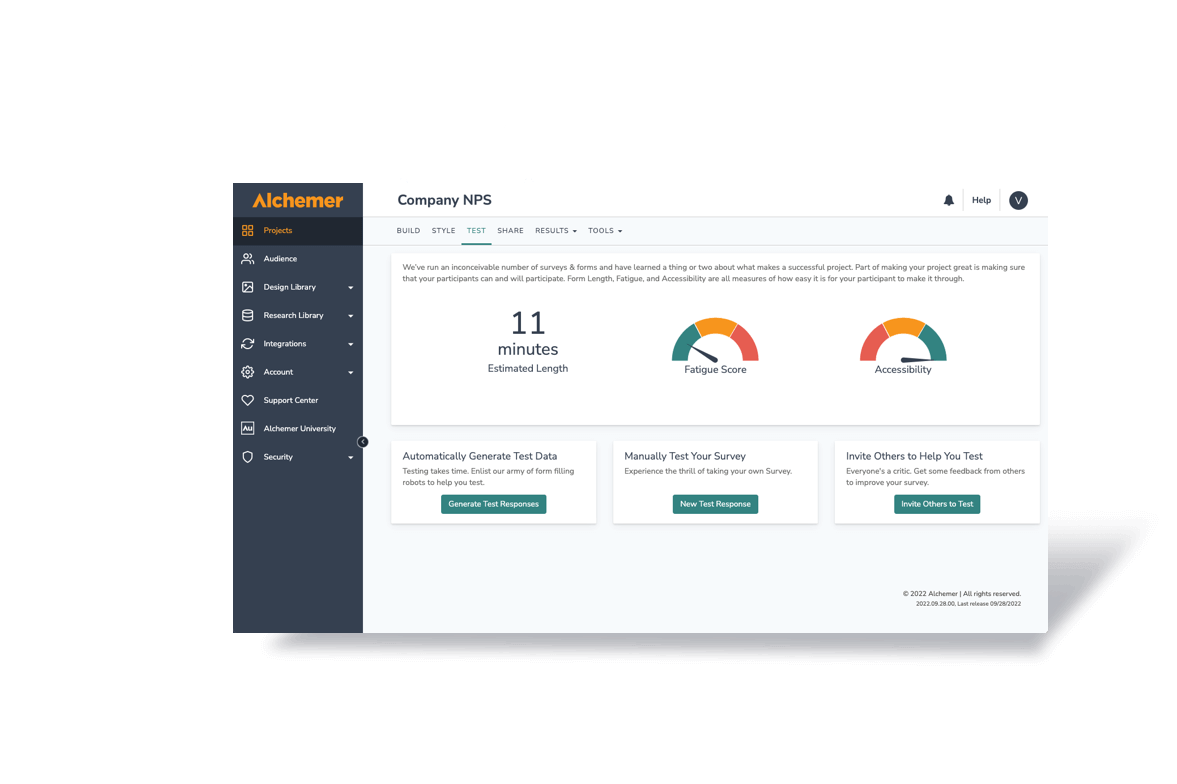Choice-based conjoint (CB) is a powerful addition to the Alchemer market researcher’s toolkit. CBC helps you understand which product attributes matter most to your customers. By presenting survey respondents with various product combinations, each featuring different attributes, CBC reveals the options customers are most likely to choose.
Alchemer’s CBC makes it easy for both seasoned researchers and those new to market analysis. It simplifies the process of determining which attributes drive purchasing decisions, offering valuable insights without the complexities of other programs. Plus, it’s affordably priced.
Reminder: This is part two of a two part series overview of market research techniques. Read Part 1!
Using Conjoint Analysis to Determine Market Priorities
Conjoint analysis is perfect for tackling important questions in various areas. It helps with product development, competitive positioning, and setting price points. Additionally, it provides insights into market segmentation and resource allocation.
With so many possible pieces in play, designing and administering a conjoint analysis is a complex undertaking. When it comes to gathering solid data on the features that truly influence customer purchases, there’s no better method available. Conjoint analysis stands out as the most effective approach for this purpose.
Tips for Designing an Effective Choice-Based Conjoint Survey
Choice-based conjoint is a flexible, powerful tool that is endlessly adaptable to your unique needs. This flexibility allows you to design the study exactly as you need it. However, it also means there’s a risk of making mistakes if you’re not careful.
Keep these tips in mind as you design and build your choice-based conjoint survey:
1. Limit Your Attributes
There are probably dozens of characteristics that differ among your offerings and those of competing businesses. It’s important to narrow down the list to only those that are relevant. (The results from your competitive analysis surveys and customer surveys will help narrow down the options.)
Too many attributes will make your survey difficult to read and can lead to survey fatigue and a rise in incomplete survey responses.
2. Choose Realistic Levels
Choose attribute levels that align with your industry and target demographic. Ensure that these levels are relevant and practical for both your field and audience. If you are planning on setting affordable wristwatches, for example, you wouldn’t set a possible price attribute level at $1,000.
3. Spend the Time to Do It Right
Designing a choice-based conjoint survey involves numerous variables and considerations. Because of this complexity, it’s important to approach the task with thorough preparation and diligence. This means putting in your homework before you launch your survey, too, by researching your competitive landscape and potential customers.
As we mentioned in step 1, preliminary research and smaller conjoint-based surveys can gauge the right levels and attributes to include in your “real” one. While it may seem like an additional investment of time and money, doing your homework before the big test always pays off.
Finding Respondents: Partner with Panel Companies
When time is of the essence or you are looking for a particular audience demographic that would be difficult for you to find on your own, contracting with an outside panel company is the best way to save time.
While it will be an up-front cost to contracting with a panel company, in many cases the amount of time you save is worth it.
Remember, however, that not all panel companies are created equal. You will need to identify the best panel company based on the target audience you need for your surveys, as panel companies do tend to specialize in geographic areas, demographics, or industries. The best thing to do when vetting panel companies yourself is to schedule time to speak directly with a project manager.
After identifying a panel company, you’ll need to work with them to determine pricing. This cost typically depends on factors such as the length of your survey, the number of responses required, and the specificity of your target demographic.
To make working with panel companies easier, Alchemer has well-established relationships with seven of the most respected panel companies in the industry. Our panel program manager will work with you to determine which panel company is right for you, then negotiate the best price for your project.
Alchemer: One Stop Survey Solution for Market Researchers
Many pre-existing software options that are available to market researchers, however, can only really do one thing well. Some excel at collecting qualitative data. Some focus on one kind of survey data collection type. Others are really good at analyzing the numbers, but the raw data has to be imported from elsewhere.
What you really need is the one tool that really can do it all for market researchers, from data collection to analysis to reporting. A full featured survey software platform like Alchemer allows you to do more faster and more cost-effectively because all of your data collection, analysis, and visualizations are created and stored in the same place.




